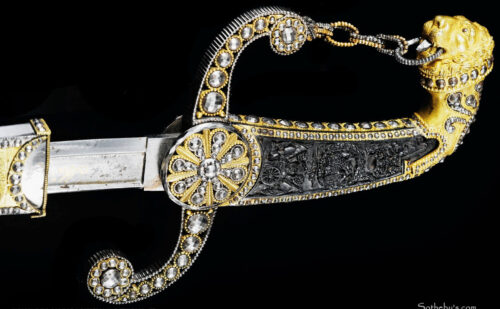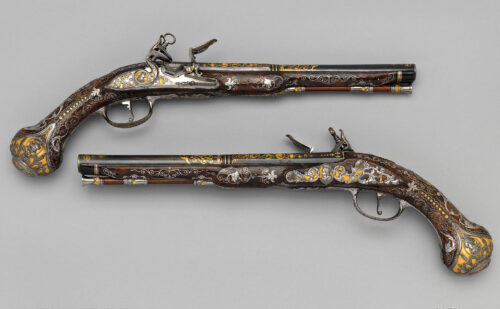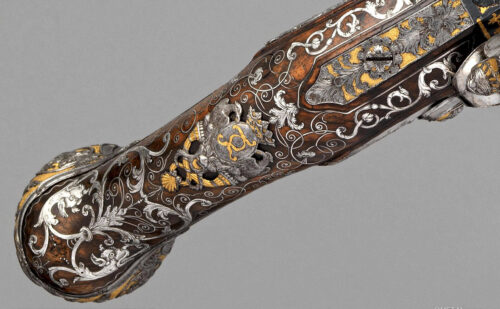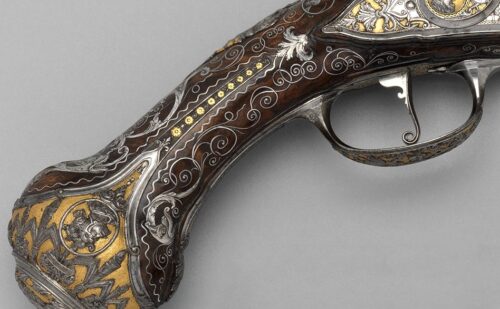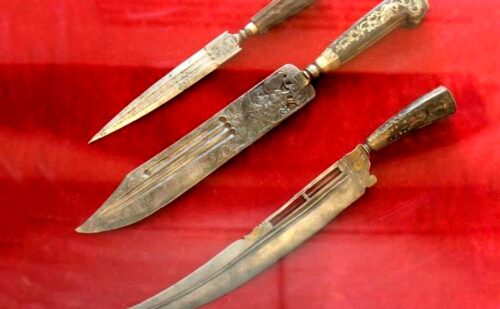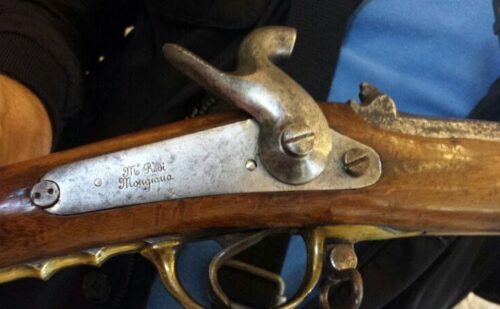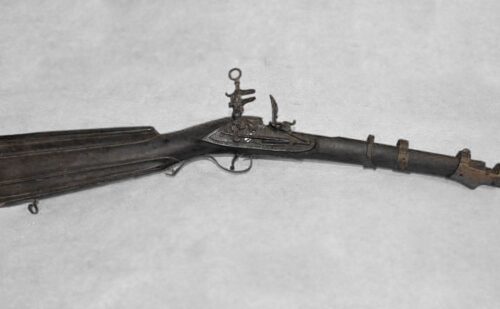The weapons factories of the Bourbons
Created by the largest and most prestigious Italian industries of the time
The Weapons Factories
The three Bourbon weapons factories at the time were the largest industries in Italy. They were:
- The Royal Steel Factory (Capodimonte Palace, Naples)
- The Royal Weapons Factory (Torre Annunziata, Campania)
- The Royal Weapons Factory (Mongiana, Calabria)

The Armory in the Capodimonte Museum in Naples
The Royal Steel Factory
Ferdinand IV loved to make various objects himself in the forge installed above his apartments, and to have an interest in the applied arts. Therefore, a Steel Factory was probably founded in Naples, around 1782, which had immediate results, and which the king always followed closely.
The Factory, under the direction of Cavalier Venuti, was located in the Palace of Capodimonte together with that of porcelain. Weapons of various types were made with that precious technique that makes the facets of steel sparkle like diamonds. The king sent them as a gift to European royalty. As in France and other countries, steel was probably also used here for furniture finishing, but there are no certainties.
Initially the Fabbrica had Viennese workers, but a few years later they also hired Neapolitans. The history of this royal manufacture is still very little known. Initially it depended on the Porcelain Factory, later, during the military occupation, it passed under the control of the Ministry of the Interior, then to the Ministry of War which used it as weapon mounting. Later they wanted to combine it with the manufacture of semi-precious stones. Many of these objects, at the time, were objects placed above the doors of the royal rooms to form trophies (panoplies).
Despite the vicissitudes, a large part of the King's Armory is still visible in the Capodimonte Museum.
The Royal Factory at Torre Annunziata
In 1744 the situation of the war structures of the Kingdom of the two Sicilies had suggested to Charles of Bourbon to strengthen the fleet and the defense of the capital, to found a Military Academy of Artillery, to strengthen the activity of the Neapolitan dock for the merger of bronze cannons. So in 1753 he had the idea of creating an weapons factory near Naples that would supply the Bourbon army and make it independent from foreign supplies. The choice of the place fell on Torre Annunziata due to the presence of a large state-owned area and the advantages offered by the Sarno canal as a source of hydrodynamic energy.
We have explicit news of the royal decision in a letter dated September 1735, in which Luigi Vanvitelli communicates to his brother Urbano that "a new weapons factory will be set up here, as in Brescia and Barcelona". But the operations for the construction of the factory would not have begun until 1758, and by Francesco Sabatini, a pupil and collaborator of Vanvitelli.
The factory mainly supplied the army with firearms and sidearms of war use, but also created hunting weapons of great quality for the king and the court, or to be sold in public auctions and authorized shops through representatives authorized by the king. The Neapolitan weapons recalled the Spanish ones only in form and function, but the decoration was lighter to emphasize the beauty of the steels which, subjected to acid etching, showed the typical appearance of stains or, in other cases, a uniform color that goes from blue-purple to brown.
The guns created to commemorate the marriage of King Ferdinand IV of Bourbon and Maria Carolina of Habsburg. (On the pistols you can see the portraits of the sovereigns.) Created by Michele Battista and Emanuel Esteva, they are made of steel, with a walnut handle. They have silver and gold inlays, and embossed, chisel and niello decorations. The style is Rococo.
The Royal Weapons Factory at Mongiana
The Royal Weapons Factory was a section of the large Royal Ironworks and Workshops in Mongiana, a Calabrian town in the province of Vibo Valentia. The Ferriera (steel industry) was the first and largest iron and steel center in Italy until the Unification of Italy in 1861, it had an area of 20,000m2, and employed two thousand workers. Among other things, it produced excellent quality cast iron, which was also used for the Pietrarsa train factory in Naples.
The Royal Weapons Factory occupied an area of 4,000m2 and produced edged and war weapons such as bayonets, rifles, pistols, cannons and ammunition, etc ..
Dopo l'Unità d'Italia
After the annexation of the Kingdom of the Two Sicilies to the Kingdom of Italy in 1860, the factory progressively decreased production. In 1860, on the occasion of the annexation to Piedmont, Mongiana was the scene of a revolt against the new government, led by the workers of the Ferriere: they took to the streets, attacking the headquarters of the National Guard, trampling the tricolor, then, seizing the trumpet from the chief tinder. , gathered the entire population, who poured into the streets raising the white flag with lilies, broke the Savoy coat of arms placed in the governor's house, went down to the foundry, took the statue of Francis II and carried it in procession for the country, placing it in its old position. The participation of women especially aroused a strong impression on the Garibaldi colonel Massimino.
In 1864, the Ferrire's commission sold the factories and woods in the area to the General Mobiliar Credit Society and Banco Nazionale. . The discovery provoked disbelief, then spite, resentment and protest; finally, violence. There were thefts, looting, vandalism against the ironworks. In 1875 the ironworks was purchased by former Garibaldi Senator Achille Fazzari, who closed it permanently in 1881 also due to the lack of government aid. However, he dedicated himself to the Ferdinandea area where there was the production of mineral water, a small hydroelectric power station, and sawmills.



